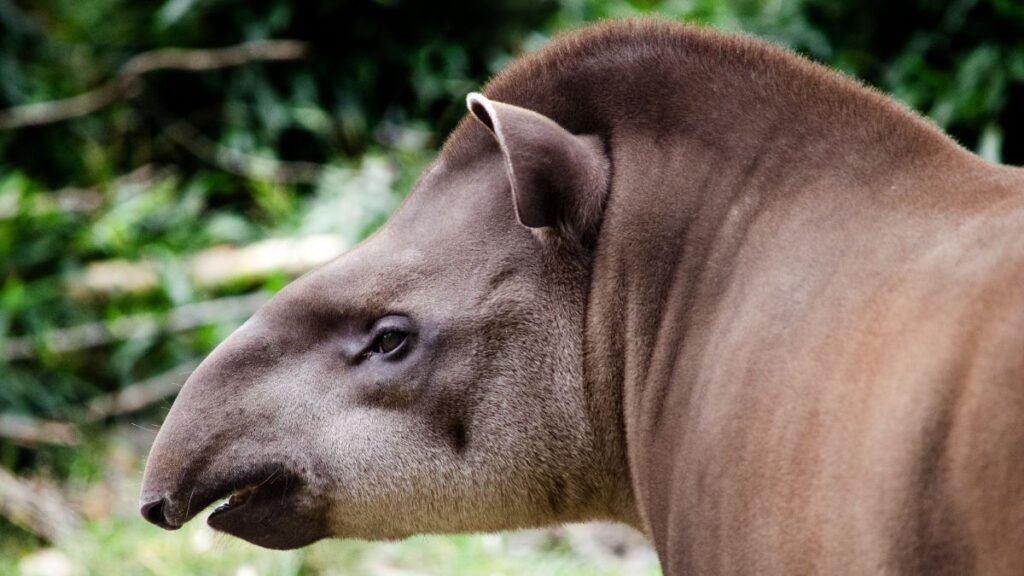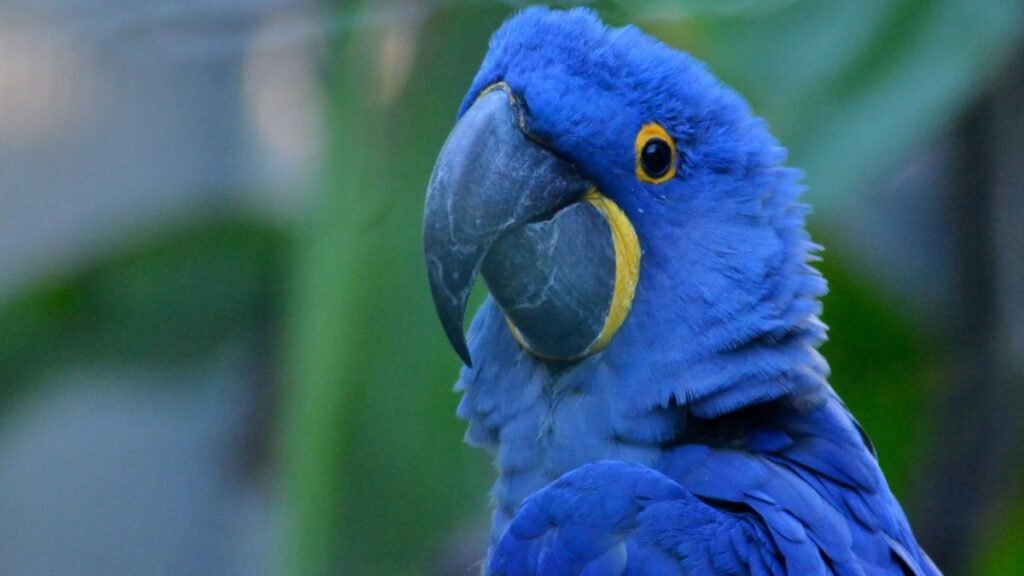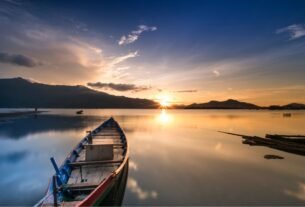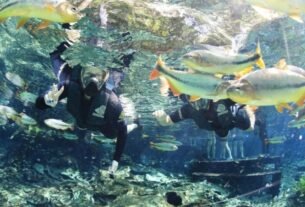Introduction
Did you know that one of the biologically richest savannas in the world, the cerrado Brazil, is home to species found nowhere else on Earth? This unique region, often called an “upside-down forest,” boasts deep root systems that store carbon and support a stunning array of life, including countless plants and animals that have adapted to thrive in this distinct environment. The Cerrado is characterized by its diverse habitats, ranging from open grasslands to dense woodlands, each hosting a variety of organisms that contribute to its rich biodiversity.
In fact, the region is not only a sanctuary for endemic species but also plays a crucial role in carbon sequestration, which is vital for combating climate change. The unique adaptations of its flora and fauna are a testament to the resilience of life in this extraordinary ecosystem.

Spanning over 1.9 million square kilometers, this vast area covers 21% of the country’s land. It’s a treasure trove of biodiversity, with 10,000 plant species—45% of which are endemic. This remarkable diversity encompasses a wide range of life forms, from rare birds that soar through the skies to unique flora that flourish in the region’s varying climates. The Cerrado’s ecosystems provide essential habitats for countless species, making it a haven for life that supports intricate food webs and ecological interactions.
Why does this matter? The region’s delicate balance is under threat, primarily due to agricultural expansion and climate change, making conservation efforts crucial. Protecting this unique biome is vital not only for the endemic species that call it home but also for the global environment, as it plays a significant role in carbon storage and climate regulation. Let’s explore 10 fascinating species that make this place truly one-of-a-kind, highlighting the importance of preserving their habitats for future generations.
Key Takeaways
- Home to 10,000 plant species, 45% of which are endemic.
- Known as the “upside-down forest” due to its deep root systems.
- Covers 21% of the country’s land area.
- Supports 10 endemic bird species.
- One of the world’s most biologically diverse savannas.
Cerrado Brazil
In the heart of South America lies a unique biome that defies expectations. Known as the cerrado, meaning “closed” in Portuguese, this region is characterized by its dense scrub vegetation. It’s a place where life thrives in unexpected ways, shaped by a semi-humid tropical climate with distinct wet and dry seasons.
The seasonal variations play a crucial role in shaping the ecosystem, influencing not only the types of plants that flourish but also the behaviors and survival strategies of the numerous animal species that inhabit this remarkable area.
The cerrado is a mosaic ecosystem, blending four main vegetation types: forest savanna, wooded savanna, park savanna, and gramineous-woody savanna. Each of these types contributes to the overall biodiversity, creating a complex habitat that supports an array of life forms.
Along waterways, gallery forests create lush corridors, adding to the region’s diversity. These forests serve as critical habitats for many species, providing essential shelter and food sources that are vital to their survival. This intricate mix supports a wide range of species, each adapted to its specific niche, showcasing the evolutionary ingenuity of life in the cerrado.
One of the most fascinating aspects of this savanna is its fire-adapted flora. Many plants, like the Qualea tree, have evolved cork-like bark to withstand frequent fires. This remarkable adaptation not only protects them from the intense heat but also allows them to thrive in an ecosystem where fire is a natural part of the landscape. Additionally, other species, such as the Brazilian pepper tree and various grasses, have developed the ability to regenerate quickly after fire events, thereby ensuring their survival and the continued health of the ecosystem.
These adaptations highlight the resilience of life in this ancient landscape, which dates back to the Cretaceous period, showcasing how species have evolved over millions of years to coexist with the dynamic forces of nature.
Beyond its ecological wonders, the cerrado plays a critical role in water resources. It feeds the Guarani Aquifer and three major river basins, making it vital for both local and regional ecosystems. The cerrado’s vegetation helps regulate water cycles, maintaining soil moisture and preventing erosion. This biome is not just a treasure trove of biodiversity but also a cornerstone of environmental stability, supporting not only the myriad of life forms that inhabit it but also providing essential resources for human communities. The preservation of the cerrado is crucial for sustaining these water resources, which are relied upon by millions, thus emphasizing the interconnectedness of ecosystems and human well-being.
The Rich Biodiversity of Cerrado Brazil
The savanna ecosystem is a vibrant tapestry of life, teeming with a diverse array of unique species. From dense forests to open grasslands, the landscape supports a wealth of plants and animals. This region’s biodiversity is a testament to nature’s adaptability and resilience. The cerrado is home to over 12,000 plant species, many of which are endemic, meaning they are found nowhere else on Earth.
Among these, the iconic Brazilian pepper tree and various species of orchids showcase the rich floral diversity. Additionally, the animal life is equally remarkable, featuring not only the vibrant colors of the maned wolf and the playful antics of capybaras but also numerous insect species that play crucial roles in pollination and soil health. This intricate web of life contributes to the ecological balance, making the cerrado a critical component of Brazil’s environmental landscape.
Flora and Fauna of the Cerrado
The vegetation gradient ranges from “campo sujo” (open grasslands) to “cerradão” (dense forests). This variety creates habitats for 837 bird species, 200 mammals, and 150 amphibians. Among these, 14 mammal species are found nowhere else on Earth.
Dominating the landscape are over 800 tree species, with the Vochysiaceae family being particularly prominent. These plant species have adapted to thrive in the region’s semi-humid climate, showcasing nature’s ingenuity.
Keystone species like leafcutter ants and termites play a crucial role as ecosystem engineers. Leafcutter ants process up to 4,000 nests per hectare, enriching the soil and supporting plant growth. Termites, on the other hand, create intricate mounds that serve as microhabitats for other organisms.
| Category | Species Count | Notable Facts |
|---|---|---|
| Birds | 837 | 10 endemic species |
| Mammals | 200 | 14 endemic species |
| Amphibians | 150 | High diversity in wet areas |
| Trees | 800+ | Vochysiaceae dominance |
In a single study area, researchers identified 57 lizard species, highlighting the region’s reptilian diversity. Another remarkable record is the 46 insect species found at Serra do Cipó, a world record for such a small area.
This ecosystem also plays a vital role in carbon storage. The deep root systems and soil hold an estimated 13.7 billion tons of CO2 equivalent, making it a critical player in global climate regulation. For more insights into this unique biome, explore this detailed resource.
10 Fascinating Species Unique to Cerrado Brazil
This unique habitat is a sanctuary for some of the planet’s most extraordinary wildlife. From towering trees to elusive predators, the region’s biodiversity is unmatched. Let’s explore 10 remarkable species that call this place home.

Giant Anteater
The giant anteater is a marvel of adaptation. With a 2-meter-long tongue, it consumes up to 30,000 ants daily, demonstrating its specialized feeding habits. This species plays a vital role in controlling insect populations, maintaining the balance of the ecosystem. Additionally, its foraging behavior helps aerate the soil, promoting healthier plant growth and contributing to the overall health of its habitat.
Maned Wolf
Often called a “fox on stilts,” the maned wolf is a striking omnivore. Its diet includes the lobeira fruit, which makes up 50% of its intake, alongside small mammals and insects. This animal plays a crucial role as a seed disperser, helping to regenerate the forest. The maned wolf’s unique long legs allow it to traverse tall grasslands, making it an adept hunter and forager in its expansive territory, which is crucial for maintaining the ecological balance.
Red-Legged Seriema
Known for its distinctive call, the red-legged seriema is a ground-dwelling bird that thrives in open savannas and grasslands. It feeds on insects and small vertebrates, contributing to the region’s biodiversity. This bird is also known for its interesting behavior of stomping on the ground to flush out prey, showcasing its adaptability and intelligence. The presence of the red-legged seriema indicates a healthy ecosystem, as it relies on a variety of prey to sustain its population.
Giant Armadillo
The giant armadillo is a nocturnal digger, creating extensive burrows that provide shelter for other animals, including various small mammals and reptiles. These burrows serve as vital refuges, especially during harsh weather conditions, and contribute to the overall health of the ecosystem. Its presence is a sign of a healthy ecosystem, as it indicates a balanced food web and a diverse habitat.
Marsh Deer
As the largest deer species in the area, the marsh deer thrives in wetland habitats, where it feeds on aquatic plants and grasses. This herbivorous diet not only sustains the marsh deer but also helps maintain the vegetation structure of its habitat. It’s an indicator of water quality and ecosystem health, as the presence of marsh deer often correlates with clean water sources and rich biodiversity.
Hyacinth Macaw
With a wingspan of 1 meter, the hyacinth macaw is a stunning bird known for its vibrant blue feathers and striking appearance. It nests in manduvi trees, playing a crucial role in seed dispersal and forest regeneration by consuming fruits and nuts, then excreting the seeds throughout the forest. This process not only aids in the growth of new plants but also enhances the biodiversity of the area, making the hyacinth macaw a crucial species for maintaining ecological balance.
Toco Toucan
The toucan is easily recognized by its large, colorful beak, which can measure up to 20 centimeters in length. This distinctive beak is not only a striking feature but also serves multiple purposes, including attracting mates and regulating body temperature.
The toco toucan primarily feeds on a variety of fruits, such as figs and berries, helping to spread seeds across the landscape. In doing so, it plays a vital role in maintaining the health of the forest ecosystem by facilitating plant diversity and regeneration.
Additionally, this bird is known for its social behavior, often seen in small groups, which enhances its ability to locate food sources efficiently.
Brazilian Tapir
Weighing up to 300 kg, the Brazilian tapir is often referred to as a “gardener of the forest.” This nickname stems from its important ecological role, as it disperses seeds through its droppings, promoting plant growth and biodiversity across its habitat.
Tapirs are primarily herbivorous, feeding on leaves, fruits, and aquatic plants, which helps shape the vegetation structure of their environment. They are also excellent swimmers, often found in rivers and wetlands, where they contribute to the health of aquatic ecosystems by foraging for food and providing nutrients through their waste.
Jaguar
As the region’s apex predator, the jaguar requires a vast territory of up to 85 km² to hunt and thrive. Its presence is critical for maintaining the balance of the ecosystem, as it helps control the populations of herbivores, which in turn affects plant life and overall biodiversity.
Jaguars are solitary animals, known for their stealth and strength, capable of taking down large prey such as deer and capybaras. Their powerful jaws can crush bones, enabling them to consume a wide range of prey, which further underscores their role as top predators.
This predatory behavior is essential not only for regulating herbivore populations but also for promoting a diverse range of plant species by preventing overgrazing. Their role as top predators ensures that the food web remains intact, supporting a healthy and diverse ecosystem.
Furthermore, the conservation of jaguars is essential, as their decline can lead to overpopulation of certain species, resulting in detrimental effects on vegetation and habitat health. Conservation efforts are crucial, as they face threats from habitat loss and poaching, making it imperative to protect their natural environments and ensure their survival in the wild.
Spix’s Macaw
The Spix’s macaw is one of the rarest birds in the world, with fewer than 100 individuals remaining in the wild, making it a symbol of the urgent need for conservation efforts. Recent reintroduction efforts aim to save this critically endangered species, which has faced severe threats from habitat destruction and illegal trapping.
Conservationists are working tirelessly to create a sustainable environment for these birds, with a focus on habitat restoration and protection. In addition, breeding programs are being implemented to increase their numbers and reintroduce them into their natural habitats, ensuring that they can thrive once again in the wild.
These species highlight the incredible biodiversity of this region, showcasing the unique flora and fauna that depend on the delicate ecosystems of the Cerrado. Protecting their habitats is essential for conservation and the future of this unique ecosystem, as each species plays a vital role in maintaining ecological balance. Without concerted efforts to safeguard these environments, the loss of the Spix’s macaw and other species could signify a larger crisis affecting the entire ecosystem.
Conservation Challenges in Cerrado Brazil
The unique ecosystem faces mounting threats that jeopardize its delicate balance. From deforestation to agricultural expansion, these challenges are reshaping the landscape at an alarming rate, resulting in the fragmentation of habitats and a decline in biodiversity. Understanding these threats is crucial for developing effective conservation strategies that can mitigate the impacts of human activities and promote sustainable land use practices.

Deforestation and Habitat Loss
Deforestation has surged by 43% in 2023, with 740 km² cleared in Mato Grosso alone between 2021 and 2022. This loss of land has a direct impact on biodiversity, as only 21.3% of the original vegetation remains intact. The destruction of habitats threatens species like the giant anteater and maned wolf, which rely on these ecosystems for survival.
Agricultural Expansion
The rise in agriculture has transformed vast areas into farmland. Soy production has expanded by 312% since 2000, driven by global demand. Major companies, such as JBS, Marfrig, and Minerva, are linked to deforestation areas the size of Chicago. Additionally, 32.8 million cattle in Mato Grosso—equivalent to nine per resident—highlight the scale of livestock farming.
Climate Change
Climate change exacerbates existing challenges, altering rainfall patterns and increasing temperatures. The loss of carbon stocks, equivalent to China’s annual emissions, further accelerates global warming. Acidic soil conditions, neutralized by 6.5 million tons of lime annually, add another layer of complexity to sustainable land use.
| Threat | Impact | Key Data |
|---|---|---|
| Deforestation | Habitat loss, biodiversity decline | 43% increase in 2023 |
| Agricultural Expansion | Land conversion, soil degradation | 312% soy growth since 2000 |
| Climate Change | Altered ecosystems, carbon loss | Carbon stock loss equals China’s emissions |
These challenges highlight the urgent need for conservation efforts. Protecting this ecosystem is not just about preserving biodiversity—it’s about safeguarding the planet’s future.
Efforts to Protect Cerrado Brazil
Protecting this unique ecosystem requires a collaborative effort from governments, communities, and organizations. With over 560 protected areas covering 9% of the biome, significant strides have been made to safeguard its biodiversity. The SNUC law, established in 2000, has played a crucial role in creating conservation units that serve as vital sanctuaries for wildlife.
National Parks and Reserves
National parks play a crucial role in conservation. Chapada dos Veadeiros National Park, for instance, protects 240,000 hectares of pristine land. Managed by ICMBio, the park is home to a diverse array of species and serves as a model for sustainable conservation and protection.
ICMBio oversees 241 federal reserves, spanning 6.4 million hectares. These reserves are essential for preserving habitats and ensuring the survival of endemic species. They also provide opportunities for research and education, fostering a deeper understanding of the ecosystem.
Community Involvement
Local communities are at the forefront of conservation efforts. Indigenous groups, such as the Xavante and Xerentes, have implemented community-based initiatives that blend traditional knowledge with modern practices. Their efforts have been pivotal in maintaining the ecological balance.
International regulations, such as the EU Directive on the Re-use of Materials (EUDR), are also shaping the future of conservation. These rules impact exports, encouraging sustainable practices. For example, the UK imported 1,771 tonnes of beef from Mato Grosso in 2023, highlighting the need for responsible sourcing.
| Initiative | Impact | Key Data |
|---|---|---|
| National Parks | Habitat preservation | 560 protected areas |
| Community Projects | Ecosystem balance | Xavante and Xerentes involvement |
| Regulations | Sustainable practices | EUDR impact on exports |
Financial institutions, such as Vanguard and BlackRock, are also under scrutiny for their ties to deforestation. Meanwhile, SEMA’s environmental permits system is being analyzed to ensure compliance with protection standards. These combined efforts are vital for the future of this ecosystem.
The Importance of Cerrado Brazil for Global Biodiversity
Few places on Earth have such a profound impact on global ecosystems. This biome is not just a regional treasure but a global asset, influencing climate patterns and sustaining life far beyond its borders. Its role in carbon sequestration and water resources makes it indispensable for the planet’s health.
Carbon Sequestration
This region is a powerhouse for storing carbon. Its deep root systems hold an estimated 13.7 billion tons of CO2, equivalent to China’s annual emissions. This underground storage is five times greater than above-ground biomass, making it a critical player in climate regulation.
The IPCC has recognized this biome as a key stabilizer in the fight against global warming. Without its contributions, achieving the 1.5°C climate goal would be nearly impossible. Protecting this area is not just a local priority but a global necessity.
Water Resources
Water is another vital resource this biome provides. It supplies one-third of the Amazon River’s flow and contains the headwaters of the Paraná, Araguaia, and São Francisco basins. These river systems hold 8% of the world’s freshwater, supporting millions of people and countless ecosystems.
The Guarani Aquifer, one of the largest underground reservoirs, relies on this region. It provides water for 45 million people, highlighting the biome’s role in sustaining life across continents. Preserving this area ensures the stability of water resources for future generations.
- Root systems store 13.7 billion tons of CO2 (2017 estimate).
- Guarani Aquifer supplies 45 million people with water.
- 8% of global freshwater is found in this region’s river systems.
- IPCC recognizes it as a critical climate stabilizer.
- WWF warns that the 1.5°C goal is unattainable without this biome.
This biome’s contributions to global biodiversity and environmental stability are unparalleled. Its preservation is essential for the health of the planet and the well-being of future generations.
Conclusion
The conservation of this unique ecosystem is more urgent than ever. With only 23% of its areas protected, the survival of over 200 endemic species is in jeopardy. Despite 433,581 km² in official reserves, deforestation has surged by 43%, starkly contrasting with the Amazon’s 50% reduction.
The upcoming EUDR implementation in December 2024 adds pressure for the adoption of sustainable practices. Consumers can make a difference by choosing sustainable beef options, which can directly impact deforestation rates. Expanding IUCN protection beyond the current 9% is critical to safeguarding this region’s biodiversity.
Economically, the stakes are high. Mato Grosso’s beef exports, valued at $2.75 billion, face risks if deforestation continues unchecked. This country’s ecosystems are not just local treasures but global assets. For more insights, explore this detailed resource.
Protecting this region is a shared responsibility. Immediate action is essential to preserve its unique species and ensure a sustainable future for all. Learn more Jalapão.
FAQ
What makes the Cerrado region unique in terms of biodiversity?
The Cerrado is one of the world’s most biodiverse savannas, home to thousands of plant and animal species, many of which are found nowhere else on Earth. Its diverse ecosystems include grasslands, forests, and wetlands.
Why is the Cerrado often referred to as the “birthplace of waters”?
The region is a critical source of water, supplying major rivers such as the Amazon, Paraná, and São Francisco. Its vast network of aquifers and rivers supports ecosystems and communities across South America.
What are some of the most iconic species found in the Cerrado?
Unique species include the giant anteater, maned wolf, and hyacinth macaw. These animals are adapted to the region’s distinct habitats and play vital roles in maintaining ecological balance.
How does deforestation impact the Cerrado?
Deforestation, driven by agriculture and cattle ranching, threatens habitats, reduces biodiversity, and disrupts water cycles. It also contributes to soil degradation and climate change.
What conservation efforts are in place to protect the Cerrado?
Initiatives include the establishment of national parks, community-led conservation projects, and sustainable land-use practices. These efforts aim to strike a balance between economic development and environmental protection.
How does the Cerrado contribute to global climate regulation?
The region’s vegetation acts as a significant carbon sink, absorbing carbon dioxide from the atmosphere. Protecting its ecosystems is crucial for mitigating climate change.
What role do local communities play in conserving the Cerrado?
Indigenous and local communities are key stewards of the land. Their traditional knowledge and sustainable practices help preserve biodiversity and maintain ecological health.
Why is the Cerrado’s soil so important for agriculture?
The region’s fertile soil supports large-scale farming, particularly for soybeans and cattle. However, unsustainable practices can lead to soil erosion and loss of native vegetation.
How does the Cerrado’s biodiversity compare to other biomes?
The Cerrado rivals the Amazon in terms of biodiversity, boasting over 10,000 plant species and hundreds of bird and mammal species. Its unique ecosystems make it a global biodiversity hotspot.
What are the main threats to the Cerrado’s wildlife?
Habitat loss, fires, and climate change are major threats. These factors endanger species like the giant armadillo, marsh deer, and Spix’s macaw, pushing some toward extinction.




